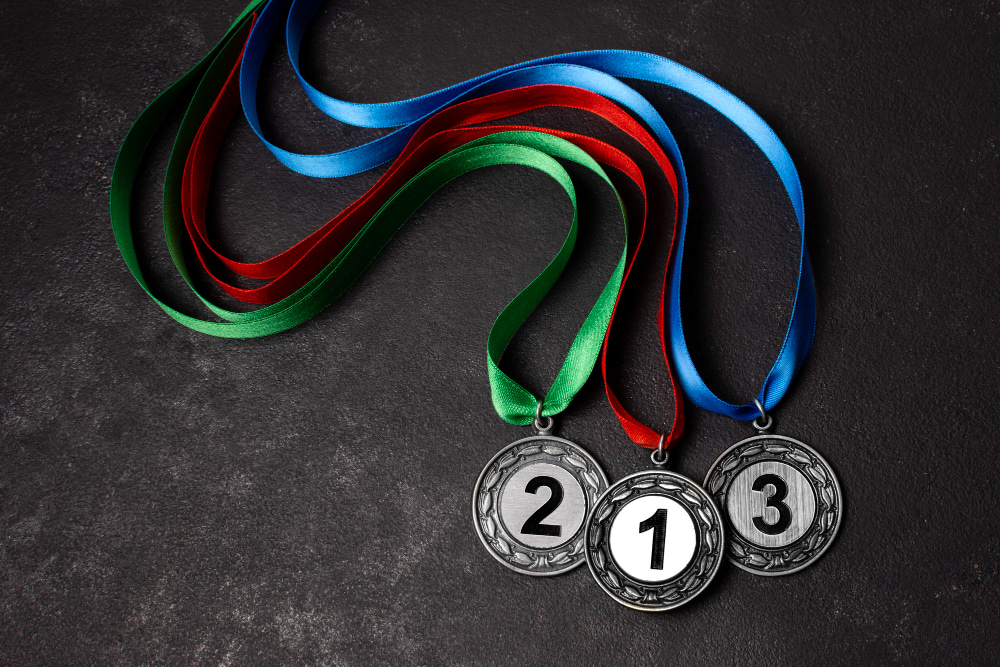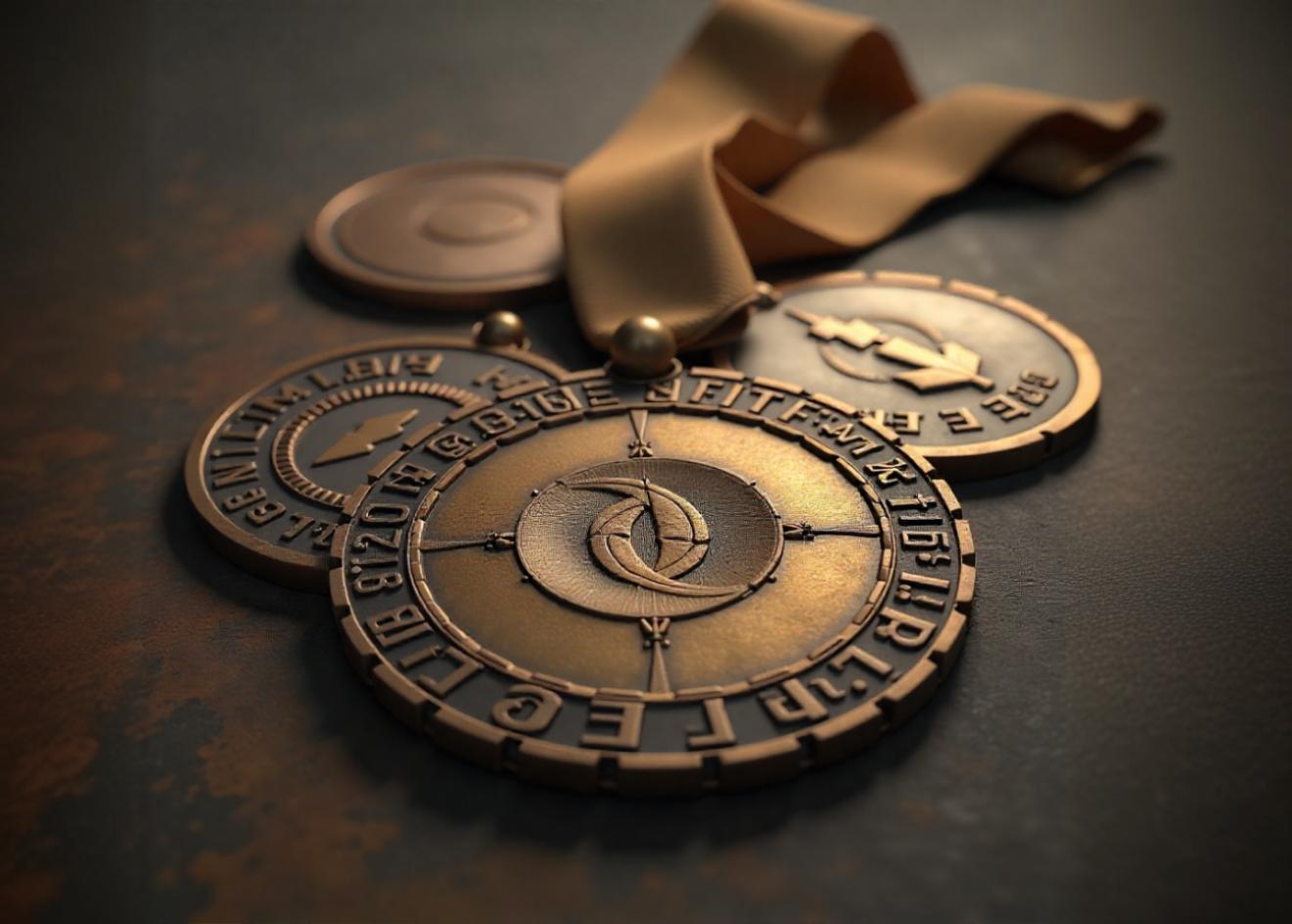Medal designs have long served as powerful symbols of achievement, recognition, and commemoration. From ancient civilisations to modern sporting arenas, these tangible tokens of honour have evolved significantly, reflecting changes in art, technology, and societal values. This blog post delves into the fascinating journey of award craftsmanship, tracing its progression from traditional forms to the cutting-edge creativity seen today, all while maintaining an Australian English perspective.
Ancient Origins: The Dawn of Recognition
The concept of awarding individuals for their accomplishments dates back millennia, though the form of recognition has varied. In Ancient Greece, for instance, Olympic champions were not adorned with metal discs but with crowns of olive leaves, pine, laurel, or wild celery. These natural garlands symbolised divine favour, representing triumph and honour before the gods. While not medals as we know them today, they laid the foundation for tangible symbols of success.
During the Middle Ages, the idea of a physical token of merit began to emerge. Medals were used to commemorate acts of bravery in battles and to honour religious deeds, often engraved with intricate religious imagery. These early medal designs were typically awarded to nobility as signs of honour and loyalty, signifying the recipient’s esteemed standing in society. Crafted from materials like bronze, silver, or gold, they featured customised engravings that reflected the individual’s status and achievements.
The Renaissance: Birth of the Modern Medal
The true birth of the modern-style medal, with its familiar disc-like form and artistic representation, came during the Renaissance. Italian artist Pisanello (c.1395–1455) is widely credited with creating the first portrait medals, revolutionising the concept of awards. His pieces often featured realistic depictions and inscriptions that honoured the recipient’s accomplishments, aspirations, and convictions.
These early Renaissance creations lacked strict standards for size or material, being cast or struck from copper, lead-tin alloy, gold, or silver. Pisanello and his contemporaries excelled at portraying human figures with expressive realism, often reserving the reverse side for allegorical designs.
As the Renaissance progressed, especially in the Cinquecento, the bold and simple style gave way to more sophisticated, ornate creations. Masters such as Benvenuto Cellini and Leone Leoni elevated medallic art into a more refined and elegant form.
Industrial Revolution to the 20th Century: Mass Production and Standardisation
The 19th century marked a pivotal transformation in award production with the advent of industrial techniques. Mass manufacturing made medals more accessible, widely used to celebrate victories and commemorate historic events. This period also saw the rise of prestigious military honours like the Victoria Cross and the Medal of Honour, which remain iconic symbols of valour.
Recognition extended beyond military service to include achievements in science, the arts, and sport. A milestone in award standardisation came with the introduction of gold, silver, and bronze medals at the Olympic Games, setting a global tradition that influenced countless competitions.

Modern Creativity: Personalisation, Technology, and Sustainability
Today’s commemorative awards have evolved far beyond their traditional forms, reflecting contemporary values such as sustainability, inclusivity, and creativity. The demand for unique, custom-made pieces has surged as organisations recognise that a thoughtfully designed medal or trophy enhances the recipient’s experience and becomes a treasured keepsake.
The Power of Personalisation
The modern era is defined by hyper-personalisation. Recipients expect unique and memorable pieces that genuinely reflect their individual achievements. This has led to a move away from generic, circular medals towards creative shapes, innovative materials, and bespoke details that tell a story. The demand for custom medals has grown exponentially, with designs incorporating elements specific to an event, such as race course maps or local landmarks. Personalised engravings, beyond just names and dates, now include motivational quotes, achievement milestones, or even QR codes that link to digital content, transforming a medal into a cherished keepsake.
The 3D Printing Revolution
One of the most groundbreaking advances in contemporary award design is 3D printing. This technology allows for previously impossible levels of precision and complexity, enabling rapid prototyping, cost-effective small-batch production, and truly distinctive results — all without the need for traditional moulds.
Smart Technology and AI Integration
The integration of smart features marks a new era in recognition pieces. Modern medals often include QR codes or NFC chips, linking to achievement pages, event photos, or personalised video messages for an enhanced recipient experience.
AI tools now support designers by generating concepts, selecting colour palettes, and optimising measurements. This collaboration between human creativity and AI innovation is reshaping what’s possible in the world of award design.
Sustainability in Contemporary Awards
Environmental responsibility has become a guiding principle in modern awards manufacturing. More creators now use recycled metals, sustainably sourced wood, and biodegradable plastics, aligning their designs with global sustainability goals.
This focus on eco-friendly practices resonates with recipients who value responsible production and strengthens organisations’ reputations for corporate social responsibility.

The Enduring Role of Craftsmanship and Engraving
While technology reshapes the future of awards and medals, the enduring value of traditional craftsmanship remains paramount. The tactile quality of a well-made medal, the quality of the materials, and the precision of the engraving are all elements that contribute to its overall impact. No matter how advanced the technology becomes, there will always be a place for the skilled artisan in the awards industry.
Awards engravings, in particular, remain a crucial element of personalisation. The ability to add a name, a date, or a personal message transforms a medal from a generic award into a cherished keepsake. The quality of the engraving can make all the difference, and modern techniques like laser engraving have enabled unprecedented precision and detail. This blend of traditional skill and modern technology is especially important for high-value awards like trophies, where the expectation of quality and craftsmanship is at its highest.
Conclusion: A Legacy of Honour, A Future of Innovation
The story of medal evolution reflects humanity’s enduring desire to recognise achievement. From the simple olive wreaths of Ancient Greece to the interactive, sustainably produced medals of today, the journey has been one of constant innovation and artistic expression. The future of award creation promises an even more exciting fusion of tradition and technology, where personalisation, creativity, and sustainability are at the forefront.
As we continue to push the boundaries of what is possible, one thing remains certain: the humble medal will continue to serve as a powerful and lasting symbol of accomplishment, a tangible piece of history that honours the past while embracing the future.